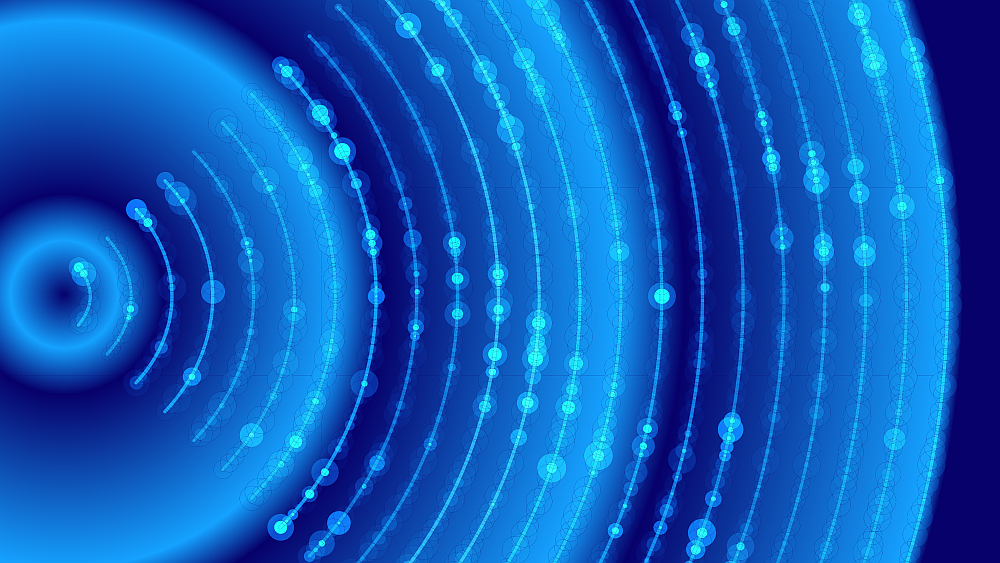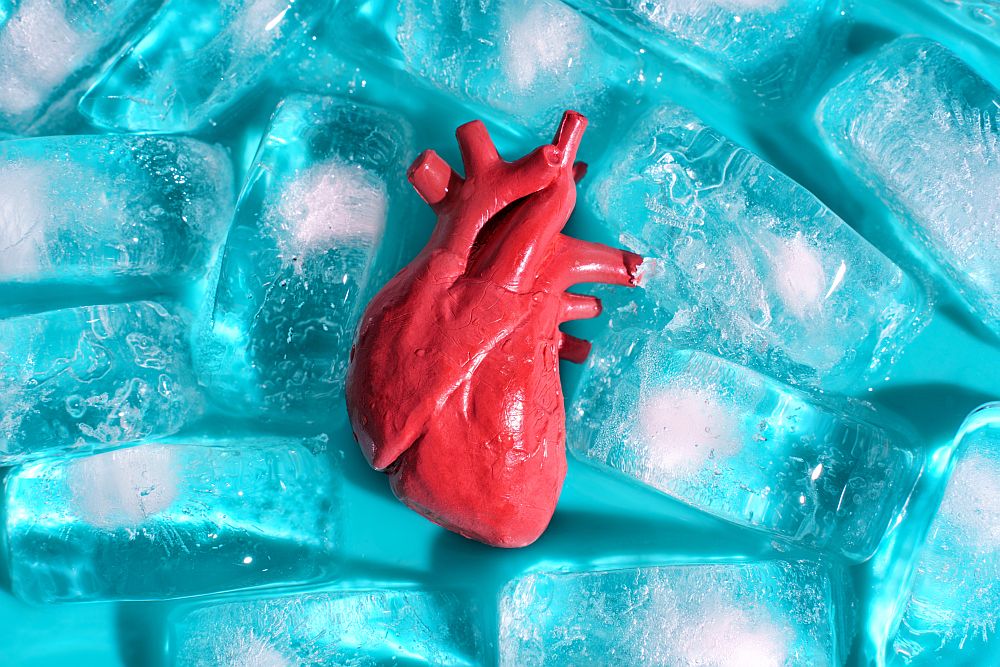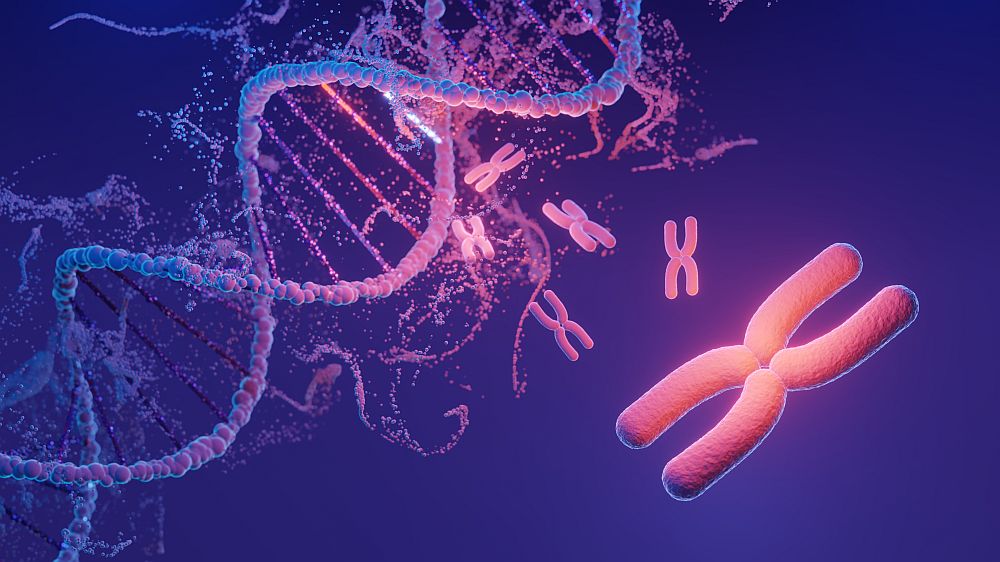
[Image above] Illustration of sound waves. Caltech researchers developed a special biocompatible solution that can be processed in vivo using ultrasound. Credit: SkillUp, Shutterstock
Since the 1980s, additive manufacturing, colloquially known as 3D printing, has grown into a significant market force with applications across many sectors. In the biomedical realm, these techniques started being used in the early 1990s, and today many of us are familiar with its uses in patient-specific devices that are implanted in the body, such as joint replacements, dental implants, and even reconstructive surgery.
While 3D-printed implantable medical devices have many benefits for patient-specific healthcare, they all require surgical insertion, which may induce a stress response in already vulnerable patients. However, by borrowing a technique from the field of drug delivery devices, researchers at the California Institute of Technology (Caltech) discovered a way to 3D print materials directly inside the body. This new method could eliminate the need to surgically insert certain biomedical devices in humans.
A sound breakthrough: Ultrasound-guided 3D printing
The approach, called deep tissue in vivo sound printing (“DISP”), was developed by researchers led by Wei Gao, professor of medical engineering at Caltech, and Elham Davoodi, previously postdoctoral scholar at Caltech and now assistant professor of mechanical engineering at the University of Utah. It involves first inserting a “bio-ink” into the body via a needle or catheter and then using ultrasound waves to guide and form the solution in place.
Ultrasound, which is commonly used in pregnancy scans, guides the solution into the desired shape by bouncing off different tissues and organs. An additional sound wave is then used to raise the temperature in that region by about 5 degrees Celsius, which coaxes the solution into a gel-like consistency. This phase transition is possible thanks to low-temperature–sensitive liposomes in the solution, which react to the additional degrees of heat and rapidly cross-link to create the hydrogel.
The researchers tested the effectiveness of this method—and biocompatibility of the ink—on mice with diseased bladders and within the deep leg muscles of rabbits. A gas vesicle in the solution served as an imaging contrast agent, allowing the process to be monitored.
The researchers found that DISP could successfully place a chemotherapy drug near the mice bladder tumor, which is often challenging to treat in humans due to the location of the tumor. DISP also successfully cross-linked deep within the leg muscles of the rabbits, showing its potential for tissue replacement in the future.
The researchers conclude that the ultrasound-guided in-vivo 3D-printing technique “enables precise, high-speed, high-resolution fabrication of functional biostructures deep within the body.” With the success of the research in mouse bladder and rabbit muscles, the DISP method showcases “its potential for targeted therapeutic interventions and tissue replacement.”
In a CalTech article, Gao says, “Our next stage is to try to print in a larger animal model, and hopefully, in the near future, we can evaluate this method in humans.”
The paper, published in Science, is “Imaging-guided deep tissue in vivo sound printing” (DOI: 10.1126/science.adt0293).
3D-printed bioceramics: Opportunities and recent advancements
Although this specific study did not involve ceramics, DISP could provide a new way to deliver ceramic components into the body. For example, ceramic materials such as hydroxyapatite/β-tricalcium-phosphate have previously been used to supplement hydrogels being used for tissue regeneration with collagen bio-inks, and it is likely they could be used in the DISP bio-inks as well.
When it comes to traditionally printed implantable medical devices, ceramic bone implants is one application that has seen some significant advances, as highlighted previously on CTT.
Currently, most synthetic bone implants are used for smaller bone graft sites, as natural bone is preferred for larger sites. This preference is because natural bone is composed of two phases—an organic phase of collagen and an inorganic phase of hydroxyapatite nanocrystals—which makes it stronger and more durable compared to synthetic versions.
Calcium phosphates are used as a common bone substitute, but they typically lack the nanostructure of natural bone. However, researchers at the University of Sydney in Australia recently developed a 3D printing method for nanoarchitectured calcium phosphates, which points to the way that ceramics and 3D printing can assist one another in biomedical applications such as bone regeneration.
Other recent 3D-printed ceramic bone scaffold advancements:
- Digital light processing has been used by several groups in China since 2022 to prepare ceramic scaffolds that have fine features, showing potential in treating tumor-induced bone defects, reconstructing alveolar clefts, and fabricating gyroid-shaped ternary composite scaffolds composed of biphasic calcium phosphate and 45S5 bioactive glass.
- Researchers in China and Germany, inspired by the structure of hot dogs, developed a two-step 3D printing process in 2019 that combines direct ink writing with bidirectional freezing to fabricate bioceramic structures and potentially help repair large bone defects.
- In 2019, researchers at University of Padova (Italy), the National Research Center (Egypt), the Federal University of São Carlos (Brazil), and The Pennsylvania State University used direct-ink 3D printing and direct foaming to find a low-cost fabrication method of the bioactive glass–ceramics that are used in tissue engineering and bone replacement.
- Researchers at New York University School of Medicine and NYU College of Dentistry used 3D printing in 2018 to print a bone scaffold that would dissolve after being implanted into the body with new bone growth taking over, also eliminating the need for an additional procedure.
Author
Helen Widman
CTT Categories
- Biomaterials & Medical


